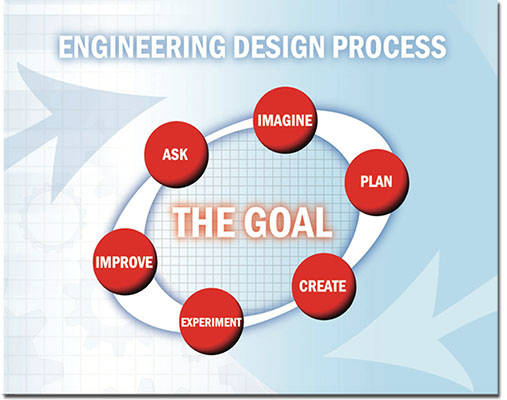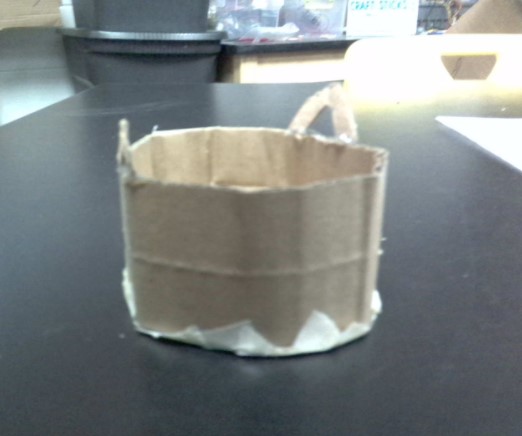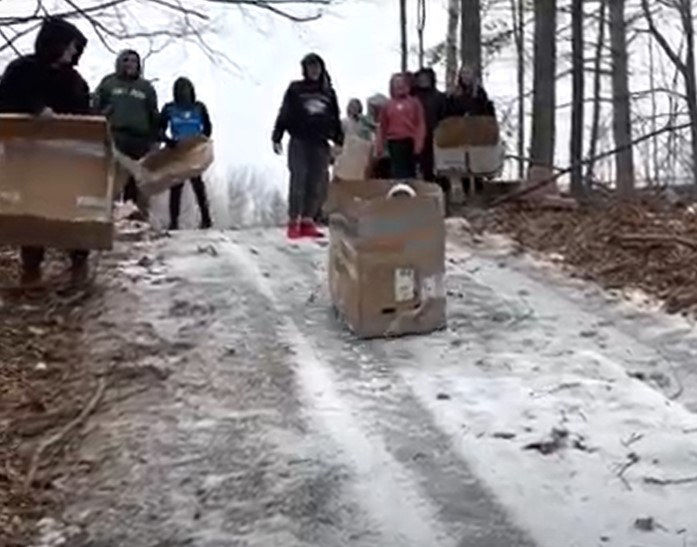Homemade bobsleds: Winter engineering
Alcona youth engaged in engineering, solving the problem of designing the fastest bobsled.

The Michigan State University Extension science team’s goal is to increase STEM (science, technology, engineering and mathematics) literacy across Michigan. One way to increase interest in STEM is to provide information and ideas for engaging youth in the exploration of their world. Adults can help youth increase their STEM literacy by encouraging them to identify problems and engineer solutions.
Recently, Alcona middle school science teacher Liz Thomson presented her students with the problem of designing the fastest bobsled using cardboard and tape. Students first learned about and then applied the engineering design process. After providing foundational knowledge about the process to students, Thomson divided the class into teams.

Next, each team made initial design sketches in a notebook, showing what their bobsled would look like knowing that it had to carry at least one person, complete a run down the course, and keep the pilot (and a secondary passenger if they chose to have one) safe. TinkerCAD, a computer app, was used to refine the initial model sketches before entering the first build stage.
Before creating the full-scale bobsleds, students built a small cardboard model and used the inclined hallway outside their classroom to test their model bobsled. Each team was required to have at least ten trial runs. During these test runs, they had to make it across the finish line without their weights (which represented the pilot) falling out, their sled crashing or falling over. If a team’s bobsled made it across the finish and met three requirements before they hit ten trial runs, they had to make adjustments to increase the sled’s speed (until ten tries were fulfilled).

After ten trials with their small model, students began building their full-size bobsled out of cardboard. Thomson and her class then went onto the property behind the school and tested each bobsled down the most ice-covered hill they could find. Each team tried their bobsled down the hill with the goal of having the fastest time. Students had a really great time building and testing the bobsleds out!
Want to replicate this activity with youth in your life? Here is one example of how the engineering design process might work. This process is very fluid and can circle within itself as fits the activity.
- ASK: Design the fastest bobsled using cardboard and tape.
- IMAGINE: Students research bobsled designs and use TinkerCAD or other rendering methods to draw and share different ideas.
- PLAN: Students select a design to use to build a scaled-down model.
- CREATE: Students build their scale model.
- TEST: Students perform ten trial runs on an indoor test hill.
- IMPROVE: Based on their results, students modify their bobsled after each trial.
- CREATE: Build full scale bobsleds.
- TEST: Students complete final tests using full size bobsleds they built on a local ice-covered hill.
- IMPROVE: Students compare model testing results to the full size run and record what they learn about bobsleds, testing with a model, and other discoveries.

STEM engages youth in identifying problems, designing solutions as they explore and understanding their world - the backyard, a pond, a frozen hill, outer space, or a pet dog. Science is not about being right or wrong, but rather working through questions with curiosity to discover answers. Identifying problems and designing solutions develops an interest for lifelong learning. A scientist or engineer is an explorer, always on the hunt for the why and how. You can help youth become lifelong learners as they explore their world by engaging them to ask questions and discover answers.
For more ways to encourage youth to become lifelong learners exploring their world, visit the MSU Extension 4-H Teaching Science When You Don’t Know Diddly-squat series, a series of free activities designed to encourage the joy of discovery by asking questions and discovering answers.



 Print
Print Email
Email
